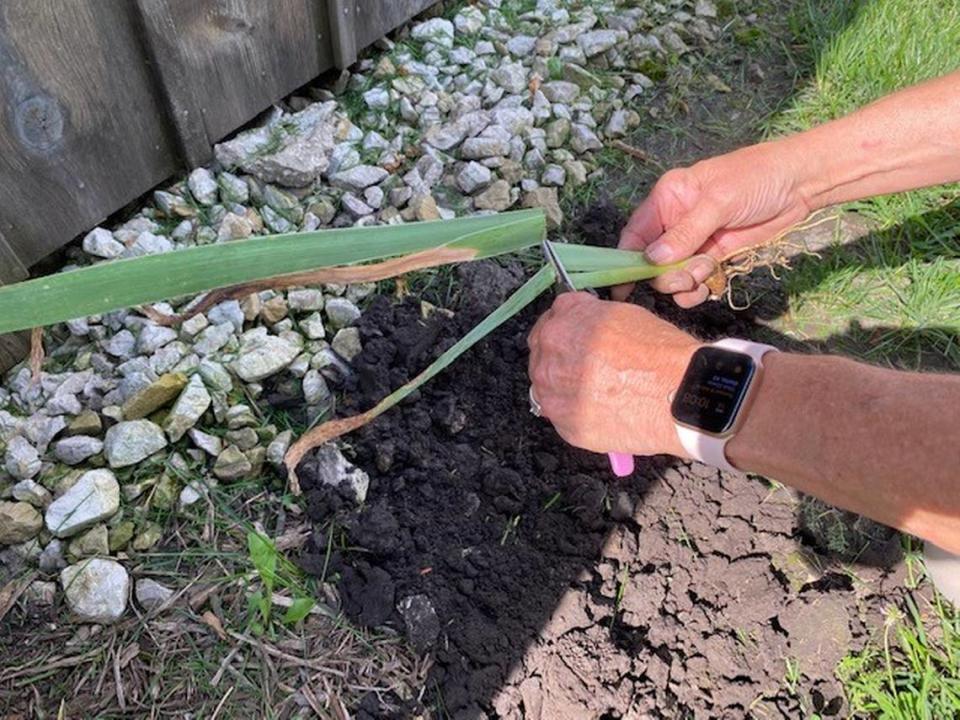Iris blooms may be long gone, but act now to ensure a stunning encore in the spring
Gracing gardens across the Midwest, irises are one of the easiest perennials to grow. Many plants have been passed along by family members, creating a legacy plant. Not only may they have a storied past in your garden, but irises carry their own interesting story.
Iris is the Greek word for rainbow and messenger. The goddess Iris delivered messages to the gods traveling on rainbows from heaven to earth. Ancient Greeks planted irises on the graves of their loved ones in hopes that the goddess Iris would connect their souls to heaven. Visit older cemeteries and you will still find iris planted along headstones.
An iris blooms in late April through mid-May and is dormant during the summer months. However, once fall arrives, the iris experiences a growth period underground in the rhizome, setting their flower buds for spring. That is why now is the ideal time to divide.
Split up a clump of irises about every three to five years for best flowering. Without timely dividing, plants outgrow their allotted space and bloom quality decreases. The ideal time to divide is late July through early August when the plant is dormant.
There is no simple way to approach a clump of overgrown iris but just jump in and tackle. Start by digging up the entire cluster. They have a shallow root system, so deep digging is not needed. Extracting the clump from the ground is made simpler by watering a few days before separating.
Once out of the ground, remove the soil from the roots and break apart the rhizomes. Iris rhizomes are vigorous and almost indestructible. Since iris rhizomes grow outward, the rhizomes furthest away from the fan of leaves are oldest, making them unproductive. They should be discarded. A good division is the last knee or bump attached to the leaves.

Preparing for replanting is the hard part, as replanting the iris rhizomes is easy. The leaves can be cut back by one-half to make the plant more manageable. Prepare the soil by spading and working in an ample supply of compost or peat moss to break up the hard clay soils found in our area.
Iris rhizomes should be planted shallowly. Cover the bottom half of the rhizome, leaving the top exposed to the sun. Planting too deeply decreases flowering. A nice size division is a grouping of three prepared rhizomes. Since irises grow out, point the leaves outward in a circle and cover lightly with soil. Thoroughly water to finish the process. Water as needed heading into winter to ensure survival and increase the likelihood of strong flowers.
A healthy clump of irises will provide divisions to share. Did you know iris colors have a special meaning? Send a message as you share your bounty. A purple iris represents admiration and wisdom, blue means faith and hope, yellow is for passion and white means purity.
Irises are a favorite of many gardeners. It would not be spring without this long-treasured plant. Don’t have an iris in your garden? Now is a great time to purchase and add to grace the garden for many years to come.
Dennis Patton is a horticulture agent with Kansas State University Research and Extension. Have a question for him or other university extension experts? Email them to garden.help@jocogov.org.

